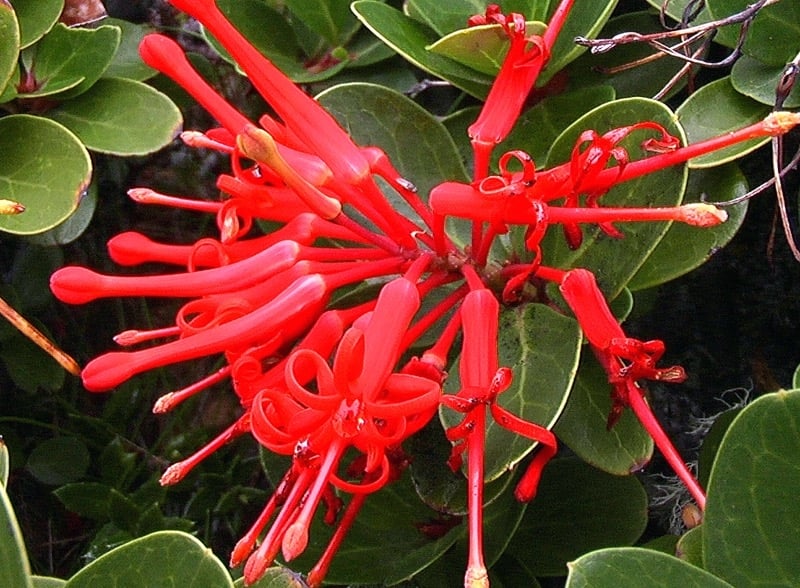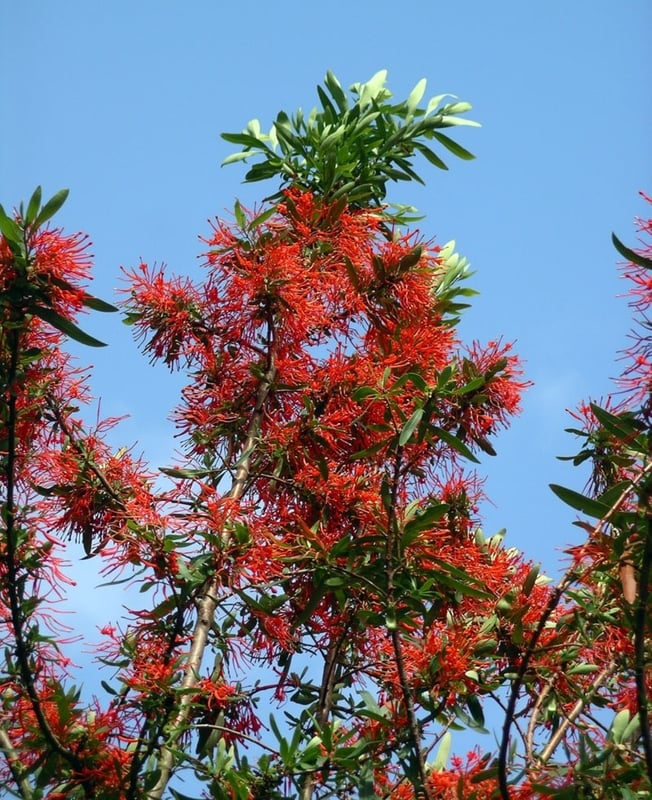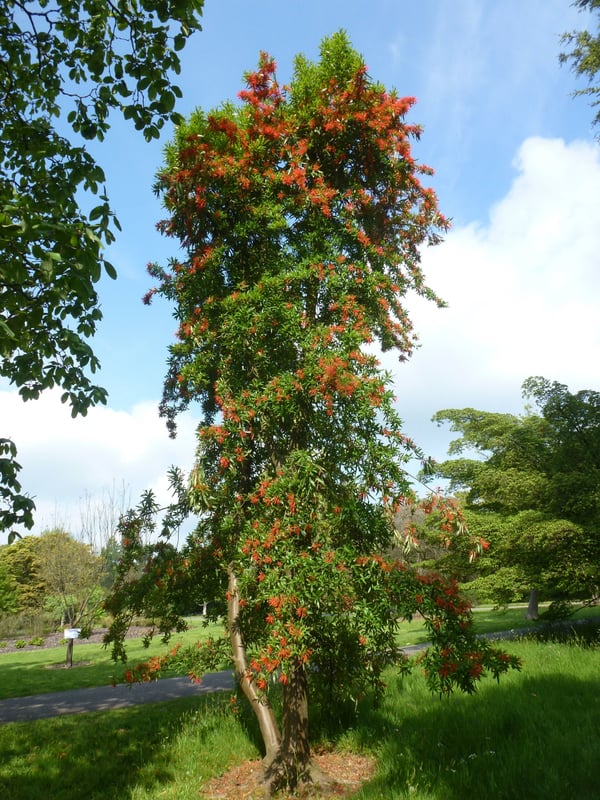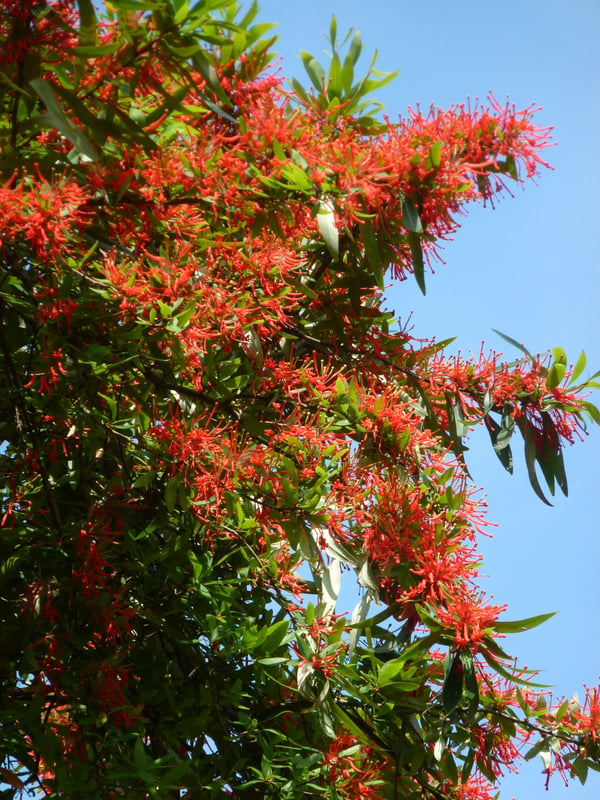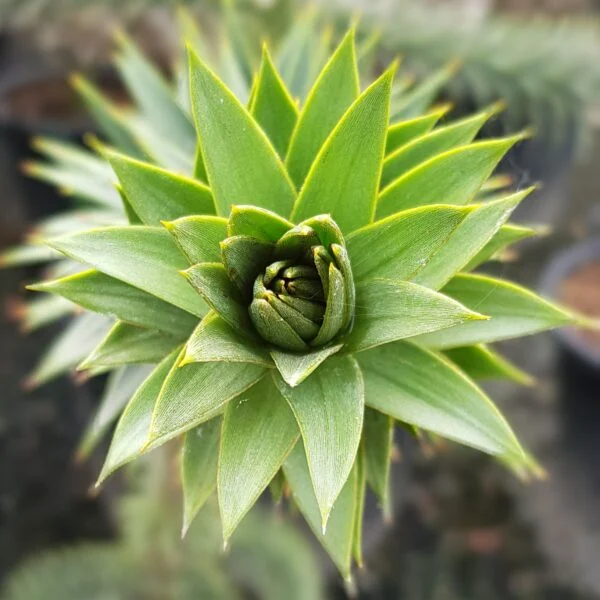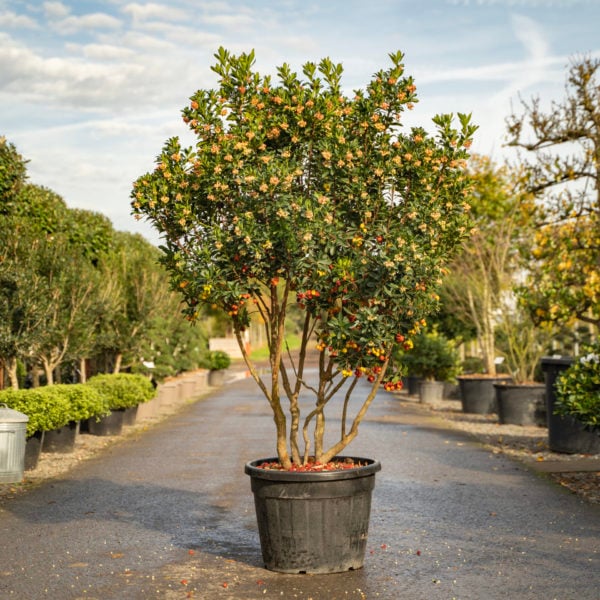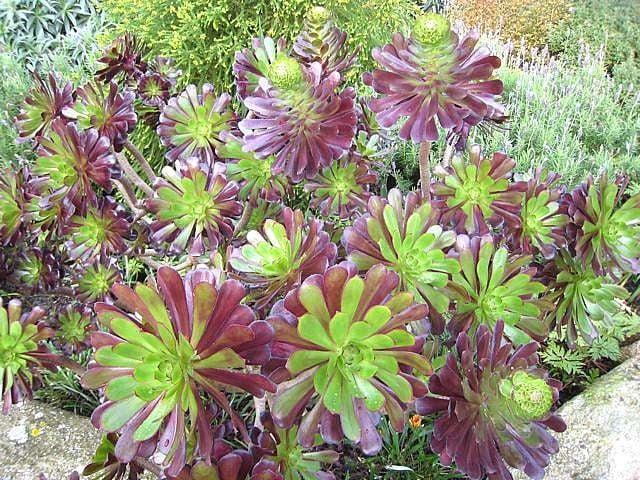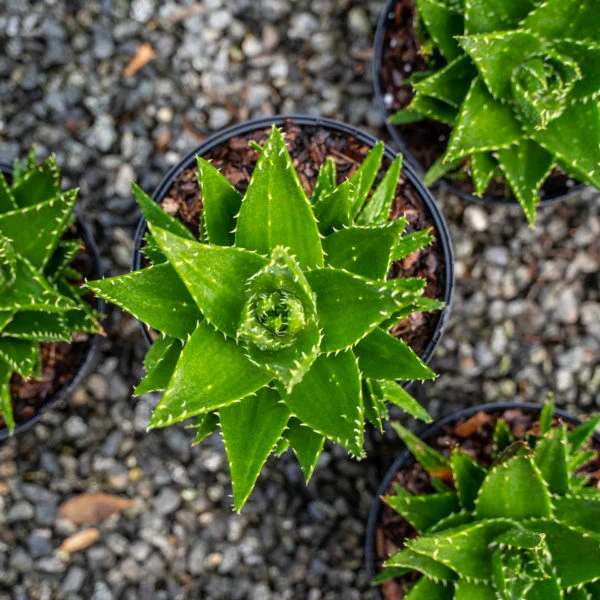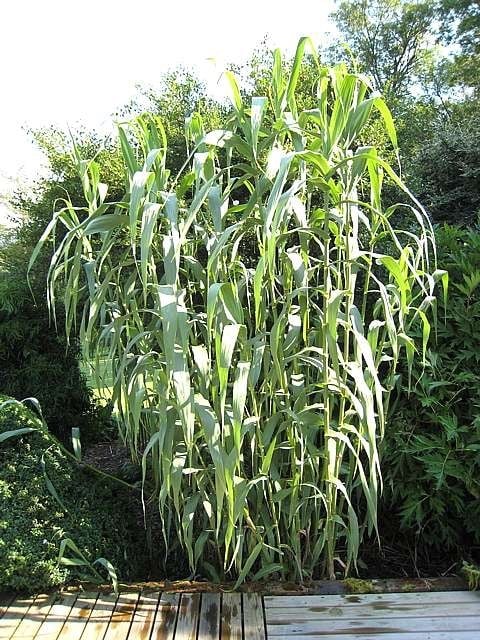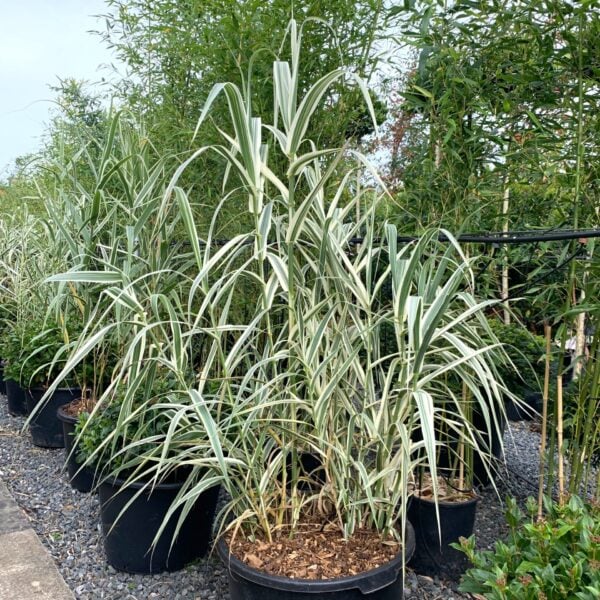Embothrium lanceolatum (Chilean Fire Bush)
Small semi-evergreen tree from South America famous for its amazing red floral display in May and June. Needs a poor acid soil. Please contact us for stock availability and sizes.

Hardiness level Amber
A much sort after little tree but a bit of a fuss pot. It can grow to 25ft after 25 years but must have the poor, well drained and acid soil that its clan (the Protea family) requires. Unfortunately, this is probably the most demanding of the clan. It's common name - The Chilean Fire Bush - is descriptive. Although not a particularly architectural plant, one must admit that it's one hell of a fine site when in flower. Absolutely covered in very red flowers in July. Although fussy about soil, this is more of a woodland plant than most of its relatives so will grow in sun or shade.
Propagated by us from seed.
On a botanic note : this is a member of the Protea family - all from the southern hemisphere - Australia, South Africa and South America. Members of the Protea family have all evolved in poor, acid soil with the result that they don't like chalky soil and they don't like phosphate. Poor sandy or peaty soil is ideal. When I say they don't like phosphate - it's actually toxic to them. Give a member of this family a good top dressing of horse manure in the summer and expect the plant to be dead in 2 weeks flat. The answer is to neglect them - never feed them, leave them alone. You'll find an amazing collection of this family growing near the main house at Wakehurst Place.
Many were planted by the curator in the 1980s and early 1990s (Tony Schilling) who seems to have been one of the first people to make the connection with the phosphate problem. Interestingly, it was later discovered that the area around the house where they're planted is notably low in phosphate.
N.B. When clipping several plants with the same tool, have a bucket containing a 5% bleach solution and swish your blades around for 30 seconds between plants to sterilise them. This will help avoid the chance of cross contamination of disease.
As with all woody plants, plant high, exposing as much of the taper at the base of the trunk as possible. Allowing soil to accumulate round the base of a tree can be fatal. Keep very well watered when first planted.
Additional Information |
|
|---|---|
| Soil Type | |
| Light | |
| Plant Type | Big Leaves / Exotics, Evergreen, Flowers, Grown by Us, Shrubs |
| Continent of Origin | |
| Specialist Plants | |
| Situation | Coastal, Mild City Gardens, Plants for Pots, Sheltered Garden |
| Flower Colour | |
| Hardiness | |




